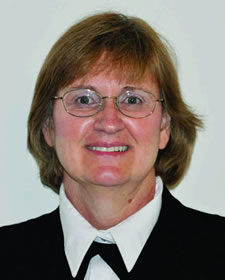 The CDC wants to use sensors -- both sensor arrays in buildings and health-sensing wearables -- to protect firefighters and paramedics that respond to 911 calls, according to an interview recently published on NextGov with Gayle DeBord, director of the Center for Direct Reading and Sensor Technology at the National Institute for Occupational Safety and Health within CDC.
The CDC wants to use sensors -- both sensor arrays in buildings and health-sensing wearables -- to protect firefighters and paramedics that respond to 911 calls, according to an interview recently published on NextGov with Gayle DeBord, director of the Center for Direct Reading and Sensor Technology at the National Institute for Occupational Safety and Health within CDC.
"There’s new sensors coming out every day," DeBord said in the interview. "We were wondering how those new sensors might affect how we protect our emergency response workers. There’s wearable sensors, so now we can develop shirts that have different sensors in them that can measure different health parameters like your respiration, your heart rate, your temperature. There are even sensors out there that you can swallow to measure core temperature, so that way you can look at heat stress. Even just looking at tablet and cellphone apps."
Firefighters in Australia are already using technology like the last one DeBord described, a pill-based biomonitoring system from Equivital.
The CDC is currently meeting with focus groups and developing a technical report on what's possible with sensors, DeGord said. They hope to have it done by the end of 2017. The eventual solution will probably involve working with builders and developers to incorporate more environmental sensors into buildings, which first responders can tap into to better prepare for calls.
"Is there a way to have sensors already located in the field?" he asked. "I was talking to an emergency responders and he said what would be really great for them is if when they get a call to go to a particular building, if there were sensors already in the building that would go off and tell you, is it a radiation problem? Is it a fire? Is it smoke? What’s in the smoke? Is it a chemical release? As they’re going to the site, they would have a better idea what they’re going to experience. It would be quicker for them to figure out how to address that particular call."
However, the component that involves putting sensors in buildings will probably take the longest; equipping first responders themselves with wearable health sensors could be implemented much more quickly.
The FCC has also been working for some time on a program that would bring first responders into the 21st century: its Text-To-911 program, which will allow people to call for emergency services via text message, and NextGen911, which will incorporate photos, videos, and data into emergency services and will use data and wifi rather than SMS.

















